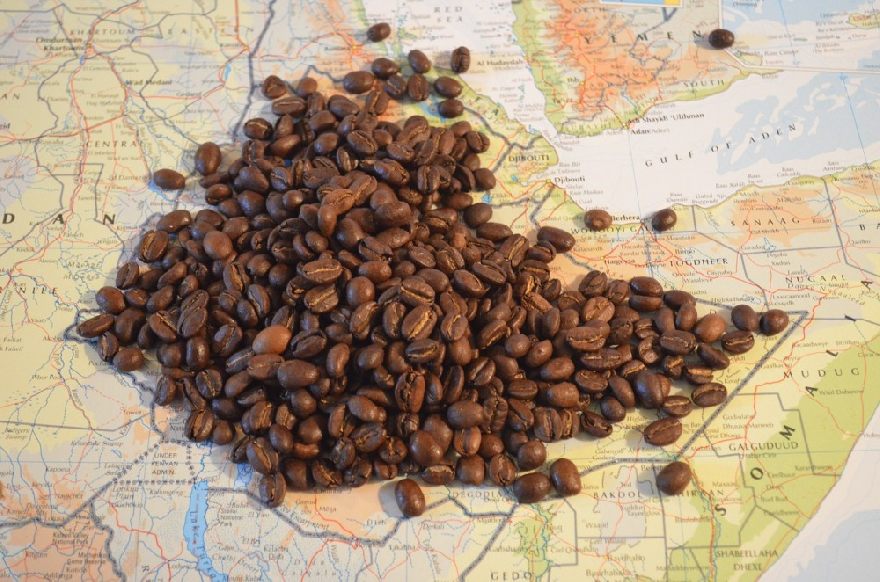Ethiopian Cuisine Overview
Ethiopian cuisine is a rich and diverse culinary tradition that reflects the country's cultural, geographical, and historical influences. Here's an overview of Ethiopian cuisine:
1. Injera: Injera is a staple of Ethiopian cuisine and is a type of sourdough flatbread made from teff flour, a gluten-free grain native to Ethiopia. It has a slightly sour taste and a spongy texture. Injera serves as both a staple food and an eating utensil. It's used to scoop up various stews and dishes.
2. Wot/Wat: Wot, also spelled wat, refers to Ethiopian stews that are typically made with meat, vegetables, and various spices. Common types of wot include Doro Wot (chicken stew), Sega Wot (beef stew), and Misir Wot (red lentil stew). These stews are often rich and flavorful, with a combination of spices like berbere (a blend of chili peppers and other spices), garlic, ginger, and sometimes fenugreek.
3. Kitfo: Kitfo is a traditional Ethiopian dish made from minced raw beef, seasoned with spices and served with injera. It's often prepared with butter and spices like mitmita (a spicy chili powder) and sometimes served slightly cooked.
4. Tibs: Tibs are sautéed or grilled meat dishes commonly served alongside injera. They can be made with beef, lamb, or goat and are typically seasoned with spices and aromatic herbs.
5. Vegetarian Options: Ethiopian cuisine offers a variety of vegetarian and vegan dishes, making it suitable for plant-based diets. Lentils, chickpeas, and vegetables are often used to create flavorful stews and dishes such as Atkilt Wot (spicy cabbage and carrot stew) and Shiro Wot (a stew made from ground chickpeas or lentils).
6. Ethiopian Coffee: Coffee holds a special cultural significance in Ethiopia, as the country is believed to be the birthplace of coffee. Traditional Ethiopian coffee ceremonies involve roasting green coffee beans over an open flame, grinding them, and brewing the coffee in a special clay pot called a jebena. The coffee is served in small cups and accompanied by frankincense.
7. Spices and Herbs: Ethiopian cuisine makes use of a variety of spices and herbs, including berbere, mitmita, turmeric, cardamom, cloves, and cinnamon. These spices contribute to the rich and complex flavors characteristic of Ethiopian dishes.
8. Injera and Fermented Foods: Fermented foods play a significant role in Ethiopian cuisine. In addition to injera, which is fermented, other fermented foods such as injera firfir (a dish made from torn pieces of injera mixed with spices and sometimes meat or vegetables) and tej (honey wine) are popular.
9. Sharing and Communal Dining: Ethiopian meals are often served family-style, with several dishes placed on a large tray or platter lined with injera. Diners then tear off pieces of injera to scoop up the various dishes, fostering a sense of communal dining and sharing.
Overall, Ethiopian cuisine offers a unique and flavorful dining experience that showcases the country's rich culinary heritage and cultural diversity. It's characterized by its bold flavors, use of spices, and emphasis on communal dining.
Sweets
Ethiopian cuisine is not particularly known for its desserts or sweet dishes compared to some other culinary traditions. However, there are still a few sweets and treats enjoyed in Ethiopian cuisine. Here are some examples:
1. Dabo Kolo: Dabo kolo are small, crunchy snacks similar to pretzels or savory cookies. They are often made from wheat flour mixed with spices like berbere and baked or fried until crispy.
2. Yebeg Watat: Yebeg watat is a sweet and savory dish made with lamb or beef cooked in a sauce that includes onions, garlic, and spices like berbere. Sometimes, a touch of sweetness is added to balance the flavors.
3. Teff Porridge: Teff, the grain used to make injera, is also used to make a sweet porridge. Teff porridge is cooked with water or milk and sweetened with sugar or honey. It can be flavored with spices like cinnamon and cardamom.
4. Honey Bread: In some regions of Ethiopia, honey bread is a popular sweet treat. It's made by mixing flour with honey and water to form a dough, which is then baked until golden brown. It's simple but satisfying.
5. Ethiopian-style Fruit Salad: Ethiopian fruit salad typically includes a mix of seasonal fruits such as mangoes, pineapples, bananas, and oranges, dressed with a squeeze of lemon juice and sometimes a sprinkle of sugar or honey. It's a refreshing and light dessert option.
6. Tella: Tella is a traditional Ethiopian beer made from fermented grains, usually barley. While it's not a sweet dessert in the traditional sense, it can have a slightly sweet and tangy flavor depending on the brewing process.
7. Buticha: Buticha is a chickpea-based dish that can be served as a savory snack or a sweet dessert. It's made from ground chickpeas mixed with spices, onions, and sometimes a bit of honey or sugar for sweetness.
While Ethiopian cuisine may not have an extensive array of desserts compared to some other cultures, these sweet treats and snacks offer a delightful end to a meal or a tasty snack throughout the day.
Drinks
Ethiopian cuisine features a variety of traditional drinks that complement its rich flavors and cultural heritage. Here are some popular Ethiopian beverages:
1. Coffee (Buna): Coffee holds a special place in Ethiopian culture, as the country is widely regarded as the birthplace of coffee. Ethiopian coffee ceremonies are a significant cultural tradition where coffee beans are roasted, ground, and brewed in front of guests. The coffee is often served strong and black, with sugar sometimes offered on the side. It's a social and ceremonial activity that fosters community and conversation.
2. Tea (Shai): While coffee is more prevalent, tea is also enjoyed in Ethiopia, particularly in regions where it's grown. Ethiopian tea is typically black tea brewed with spices such as cinnamon, cloves, cardamom, and sometimes ginger. It may be sweetened with sugar and served with milk or as a spiced tea known as "Chai Sella."
3. Tella: Tella is a traditional Ethiopian beer made from fermented grains, usually barley or a combination of barley and other grains like maize or wheat. It's often homemade and varies in flavor and strength depending on the brewing process. Tella is typically served in large communal vessels called bereles and enjoyed during social gatherings and celebrations.
4. Tej: Tej is a type of honey wine that has been brewed in Ethiopia for centuries. It's made from honey, water, and a variety of hops and spices, then fermented in traditional clay pots called bereles. Tej ranges in sweetness and potency, with some varieties being quite strong. It's commonly served in small glasses and is a popular drink during holidays and festivals.
5. Areki: Areki is a traditional Ethiopian spirit similar to a clear brandy or schnapps. It's typically made from fermented fruits such as grapes, apples, or bananas, and distilled to produce a potent liquor. Areki is often enjoyed on special occasions and as a digestif after meals.
6. Soft Drinks: In addition to traditional beverages, modern soft drinks and sodas are also available in Ethiopia. Brands like Coca-Cola, Pepsi, and local variations are popular and widely consumed.
These beverages play an integral role in Ethiopian culture, whether as part of social gatherings, religious ceremonies, or everyday life, and they offer a glimpse into the country's rich culinary and brewing traditions.













